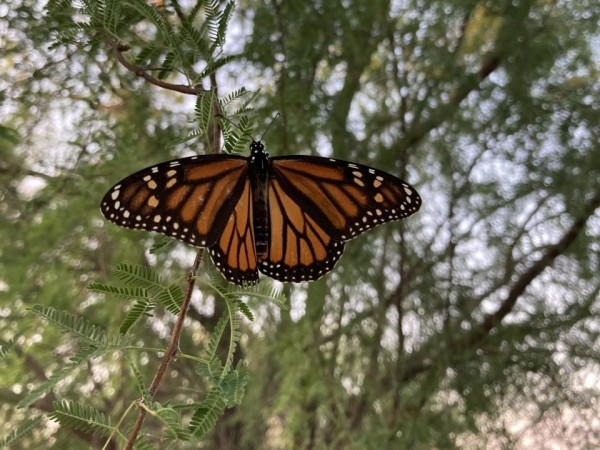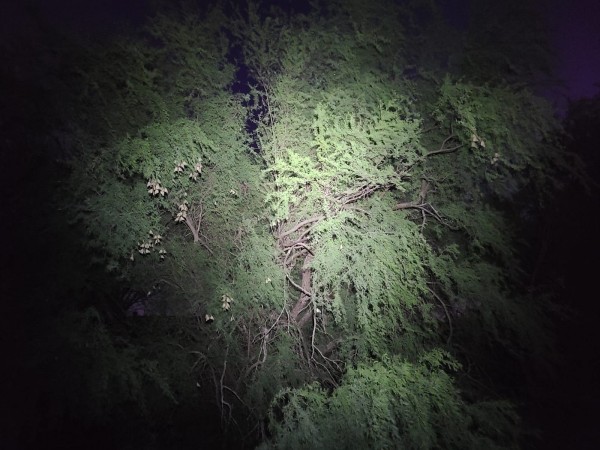Monarchs of Amistad National Recreation Area
Monarchs of Amistad
Written by Natural Resources Department, personnel, Amistad National Recreation Area
Since the mid-1960s Amistad National Recreation Area, part of the United States’ system of National Parks, has provided a “desert oasis” haven for many living things. From the blue depths of the lake to the cliffside rock scrambles, Amistad hosts a diverse score of habitats. Outdoor enthusiasts from across the globe venture to Amistad to experience these ecosystems firsthand, and to wonder at the myriad of species that call these habitats their homes. One such species which has captured the attention and hearts of many a park guest and staff member is the monarch butterfly.
Autumn is the time of the great monarch migration in North America as the butterflies begin their long journey from the northernmost range of milkweed or the plant on which they lay their eggs. Once the caterpillars hatch, they feast on the milkweed leaves as they grow closer to their pupa stage. After emerging as adult butterflies, these insects can be seen sipping nectar from summer flowers and acting as pollinators while they do so. Many biologists have recognized monarchs as being a flagship species. What they mean by this, is that, conservation of monarchs and their host plant ultimately benefits many more than the one species. Milkweed is also utilized by honeybees and many species of native bees during the summer months. These species of bees, in turn pollinate a plethora farm-raised crops such as many of the fruits we enjoy in our everyday lives. Here at Amistad, our natural resources team works to monitor and protect these monarchs. We perform these tasks not only for the benefit of the species, but for the monarch habitat as well as all the butterfly enthusiasts who make a migration of their own to Amistad to witness these small but splendid creatures.
Now that October is here, we are pleased to announce that Amistad National Recreation Area has become a flutter with monarchs! This park is what is known as a stopover site for monarch butterflies. Stopover sites can be equated to rest stops found on the interstate highways. Riparian areas, or waterside areas like those near Lake Amistad, are one of the monarchs preferred roosting stopover types. Roosts are trees which act as monarch “hotels” where the butterflies congregate at night to rest their wings. Many nectar-laden flowers grow at these stopover sites and provide a valuable food source for the butterflies during their long flight. Amistad staff in our natural resources department, along with our intern team monitor these stopover sites and the numbers of monarchs that pass through. One team member found a roost of over 300 butterflies near the Lake Amistad Dam at dawn. Another team member witnessed over 700 butterflies during a flyby survey. Our interns noticed that the monarchs were flying unidirectionally, Southwest, toward the border on the Rio Grande. Whether sun, wind, or overcast, the butterflies flew on toward their overwintering destination in central Mexico. Like the beachbound travelers of the summer months driving along the busy highways, these insects display a mix of endurance, directionality, and perseverance while on their journey.
Speaking of a journey, our team members here at Amistad use Journey North to log the numbers and locations of our winged visitors. Not only can this data help biologists who are studying the trends of monarch migrations and populations, it can be a helpful way for park guests to know where to go if they want to see monarchs. Being on an international boundary with Mexico, we can see the data sent in by monarch monitors in Ciudad Acuña as well as other towns in northern Mexico. With monitors in Ancuña, Amistad, and other locations across both countries, we hope to contribute to the protection of the monarch butterfly. At Amistad, we hope to preserve the stopover sites, continue data collection of butterfly migration and numbers, and work toward the continued conservation of this truly incredible species.





